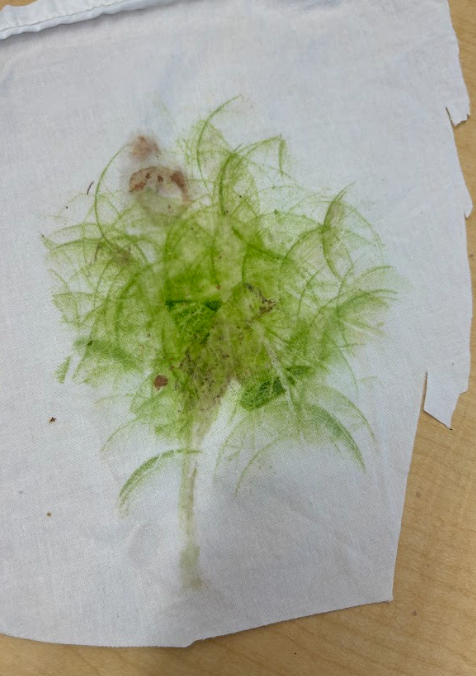Today we did a workshop with Grade 3s at Norma Rose Point Elementary on UBC Campus! It was very different teaching a group of younger kids after being on a 10-week practicum teaching secondary. The kids were very kind and very welcoming! We first got to the location and wandered a bit of the school. It was very open and had a lot of natural light coming in which was great even on this rainy day.
My first impressions was that there were a lot of positive-reinforcement signs around which I really loved! It brought a sense of community and this interesting "Periodic Table of Black Canadian History" really reinforced that sense of belonging in the school. As a science TC, I thought it was really interesting how the school brought together science and history and arranged the different historical names in a similar fashion to the periodic table. It was really awesome to see and I would definitely love to do this with my students some time, specifically for BIPOC scientists!
We then got together to discuss our game plan on the activities we would be doing with the kids. Lisa let us set up shop in her office and gave us a visual map of the raingarden which was quite larger in person than I imagined! The students came up with the really fun names for the different plants that are labeled on the map and we were told that right by the entrance was a humming bird's nest which we didn't get to see due to the heavy rain.
One thing that I really enjoyed about the raingarden is that there are multiple signs around the fence that tell us how the raingarden work as well as a reminder that we still are on unceded territory. The sign pays tribute to the First Peoples Principles of Learning about the raingarden and the importance of water. Rain that falls from the sky will land on the school roof top, as well as draining from the nearby roads which have a lot of contaminants. This raingarden helps to filter out all of the contaminants in a natural way using plants and the groundwater aquifers which will eventually be recharged. This clean water will then be used for either plant growth, or will flow back into different bodies of waters such as rivers or oceans. Ultimately, water flows in a cycle and through natural ways such as the raingarden, we can help limit our human impact on the delicate cycle that all living things depend on.
While walking through the raingarden (which was like walking through a jungle!), I reflected back at my practicum school where we also had a raingarden but its design was quite different. It reminded me back the other day when we visited the Nitobe Garden and had to think about the question: What is a garden? Even though both my practicum school and Norma Rose Point have raingardens, I've come to realize that a "garden" is quite an abstract term and it can look and mean different things. The two raingardens, although serving the same purpose, look and have different fauna and flora which goes to show that not all ecosystems are the same!
As we got deeper into the raingarden, we found some burlap lying on the ground along with moss surrounding it. The burlap helps promote the growth of moss by keeping in the moisture, and in turn, the moss will help filter out contaminants from the water. We then ventured further down a little and saw where the water would eventually flow out.
Back indoors, we separated the kids into different groups: one to listen to an Indigenous story of the humming bird, and another group to do the flower pounding and leaf rubbing activity (which eventually all of the students were able to do). I was helping out with the flower pounding and leaf rubbing group, which I observed that a lot of the kids really enjoyed arts and crafts! When showing the students the different parts of the leaf, their answers were so thoughtful and even while holding their own leaves and flowers, they took gentle care making observations. Most of the students started with the leaf rubbing activity before moving onto the flower pounding. They had a lot of fun using those hammers to make their prints!
Below is some student work from the activity:
Great job Norma Rose Point Elementary and thank you for having us! We hope you learned a lot.
-Lorilie C.










No comments:
Post a Comment